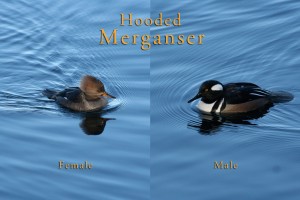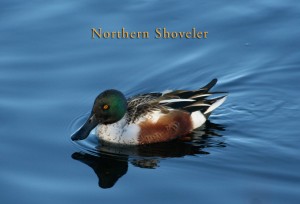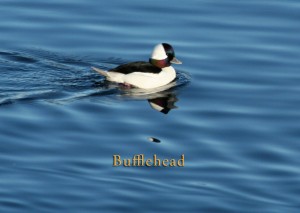Plan Your Weekend: The Birds of Winter
Posted in Wildlife on February 5 2010, by Plant Talk
Owls on Nest Once Again, Waterfowl Add Color to Gray Days
 |
Debbie Becker leads a free bird walk at the Garden every Saturday from 11 a.m. to 12:30 p.m. beginning at the Reflecting Pool in the Leon Levy Visitor Center. Photos: Debbie Becker |
 Winter holds its best birding in two areas: owls and ducks. Right now the great horned owls at NYBG are sitting on their nest ready to bring forth a new brood of owlets to delight and amaze us. Anticipated arrival time is the end of February. In the meantime, wander down to the Bronx River and observe the wonderful world of waterfowl on the river. Wood ducks, mallards, one farm duck, and several hooded mergansers have been present on the Bronx River. Ducks are fun to watch, and their brightly-hued feathers add color to gray winter days.
Winter holds its best birding in two areas: owls and ducks. Right now the great horned owls at NYBG are sitting on their nest ready to bring forth a new brood of owlets to delight and amaze us. Anticipated arrival time is the end of February. In the meantime, wander down to the Bronx River and observe the wonderful world of waterfowl on the river. Wood ducks, mallards, one farm duck, and several hooded mergansers have been present on the Bronx River. Ducks are fun to watch, and their brightly-hued feathers add color to gray winter days.
The mergansers can be seen diving under the water searching for small fish and insects. The male’s white crest becomes erect when danger is near or when trying to attract a female during mating season. The females sport a funky spiked hairdo, but their crests are burgundy and subtle. The males often bob their heads in territorial display and are silent most the time.
 On Twin Lakes, when the water thaws we often spot the handsome and majestic northern shoveler. A spectacular bird with a large beak, the shoveler is unique in its feeding habits. A few shovelers will gather and swim in a circle to act like a centrifuge, bringing up to the surface small crustaceans. This cooperation from a bunch of these birds can cause quite a stir on the water. The shoveler eats by letting the food funnel into its beak while the water runs out the sides. Quite an efficient way to feed.
On Twin Lakes, when the water thaws we often spot the handsome and majestic northern shoveler. A spectacular bird with a large beak, the shoveler is unique in its feeding habits. A few shovelers will gather and swim in a circle to act like a centrifuge, bringing up to the surface small crustaceans. This cooperation from a bunch of these birds can cause quite a stir on the water. The shoveler eats by letting the food funnel into its beak while the water runs out the sides. Quite an efficient way to feed.
The bufflehead prefers salty marshes but can often be seen on Twin Lakes or the Bronx River diving for insect larvae. This usually silent duck uses its brightly colored head to attract females. The male can dive for long periods of time, leaving a female on the surface to act as a guard. They travel in groups of up to 50 but a stray one or two have come to the Garden during the winter months.
 When bodies of water farther north freeze over, ducks migrate south looking for open water to swim and forage in. This usually brings a rare treat or two to the Garden such as gadwall, green-winged teal, pied-bill grebe, ring-necked duck, cormorants, and ruddy ducks have visited during the winter months.
When bodies of water farther north freeze over, ducks migrate south looking for open water to swim and forage in. This usually brings a rare treat or two to the Garden such as gadwall, green-winged teal, pied-bill grebe, ring-necked duck, cormorants, and ruddy ducks have visited during the winter months.
And, by the way, aside from mallards, which make a sort of laughing sound, most ducks don’t “quack.” Their calls are often sharp shrieks or low tones heard primarily in mating season. The chitter-chatter of waterfowl we do hear is often geese—not ducks—whose continual calling fills the skies and our ears with noisy cackling.

